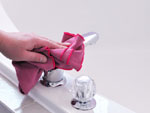life after move-in

Let's learn rules of daily life and general knowledge of Japanese life.
Estate-Search is not introduce rooms but also encourage you to live happily with your neighbors in good relationship with them.
This page show you rules of life in Japan after you make a contract to rent.

How to trash garbages
■How to trash is different depends on your comminity.
The day and time is set to trash.
Ask and confirm that your friends living near, city hall or a real estate agency.
■If you trash garbage on other day and time, your garbabe will not be taken and left. It will cause a trouble in your community.
■Check points
1. the day and time of garbage pickup 2. separating rash 3. the place to trash
4. how to trash inframmable and frammable gargabe
In comminities numbers of foreigners living, city administration offices print and distribute brochures with picutures and easy explanations.
Inquire it to city hall.
greetings
■After moving you need to greet your neighborhood, up and down, right and left door.
Introduce yourself simply.
■When you face to face at hallway or in an elevator, say "こんにちは(Hellow.)".
■If you get along with them, it's good to you in various ways.
Try to greet at ordinary times.
neighborhood association
■Everywhere in Japan there is generally a group called neighborhood association or community association.
■They carry on passing around a notice(from city hall, healthcare center and other kind of publich organizatioins, neighborhodd crime watch, disaster drill, festivals, community acitivities
■Its activities run by membership fee of inhabitants.

Daily life noise
■At a complex housing, the noise can be carried to next, up and down rooms.
Pay attention to not make noise early morning and late night.
■For instance, following sounds are counted daily life noise; a loud voice, party, TV, stereo, instruments, a vaccum cleaner, a washing machine, opening and closing doors, taking bath at late night.
Room
■Japan has a humid climate, expecially summer, try to ventilate the air in the room.
If condensation occurs, just wipe it. Do not leave it, please clean it up.Because it cuase mold and encourage it growth. It would be accounted for you.
■Commonly, it is not allowed to drive a nail or paint, please check your contract ban carefully.
■Living with someone who is not a contractant or lenting your room to others without notice.
It is illegal.
Kitchen
■Do not dispose directly of oil or garbage into the drain of a sink.
Oil should be wiped with tissue or newspapers, and trashed as flammable.
■when you cook smoky and smelly food, you need to ventilate well for not remaining smells in the room.

Bathroom
■Be sure to do not to clog the drain with your hair.
■Do not dispose of others except for toilet tissue.
■Once the drain is clogged, the water overflows and cause someone trouble.
I have to pay for damage in case people next door or down stairs get damage because of it.
how to use common use space and valcony
■At complex housing, except for your room, stairs and hallway is common use space. Do not put your belongings and trashes because those places are escape route for emergency.
■A valcony sometimes is an escape rout.
So the exit area must be kept clear of all obstructions

how to read a floor layout
■In Japan,, a floor layout is discribed, for instance, "2LDK".
。
■"L" is a living room, "D" is a dining room, and "K" is a kitchen.
"DK" is a room functioned a dining and kitchen.
■1 or 2 of "1DK", "2LDK" means distinguished room from DK or LDK.
So, "2LDK" means it has 2 rooms besides LDK.
the unite of a room(Jo, Tsubo)
■There are Japanese own unites "Jo", and "Tsubo" standing for the size of a room besides "㎡"
■"Jo"is a piece of Tatami, which size is 180cm×90cm. There is a smaller one. You can find sometimes. It shows the room is how large. It sometimes shown as "Jo".
■"Tsubo" shows a land's scale. One tsubo is about 3.3㎡.
Differences between Washitsu(Japanese) and Yoshitsu(Wentern) rooms
■Washitsu is a Japanese style room with Tatami.
■Yoshitsu is a western style room with flooring or carpet
Japanese bathroom
■Bathrooms usually contain an area for washing the body and a separate bathtub.
■A bathtub is for getting in after filling with hot water. An area except for a bathtub if for washing body and hair.
After rinse the shampoo out of your hair and soap bubble soak in a hot tub.
■When several people take a bath, it is an usual to not let the water out of a bathtub and the next person will get in it.
Not enter a house with your shoes on!
■Japanese houses generally have a step to get into a hallway or rooms from a entrance.
People take off their shoes at the entrance and get into the house. It is natural to have a seat on a floor and lay out the bedding for a rest.
So you have to take off your shoes before you get into a house. You shold not to enter with your shoes on.
Tips for you
It happenes sometimes to get in troubles when foreigners in Japan do not know its culture and rules of Japanese society. Both Japanese and foreigners could get offended because of it. It is very sorry for that if you become to feel Japan is not a nice place to live by troubles you experienced
If you know rules and the way of Japanese life style, you do not have to waste your time on that and enjoy your life at all. Just take care on it a little. That's too enough to make your life be greatful and meaningful in Japan


